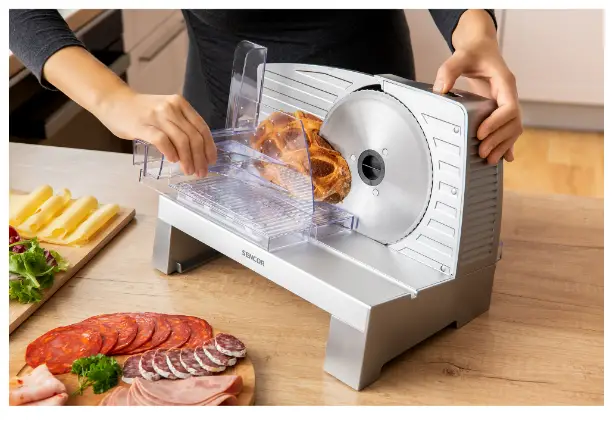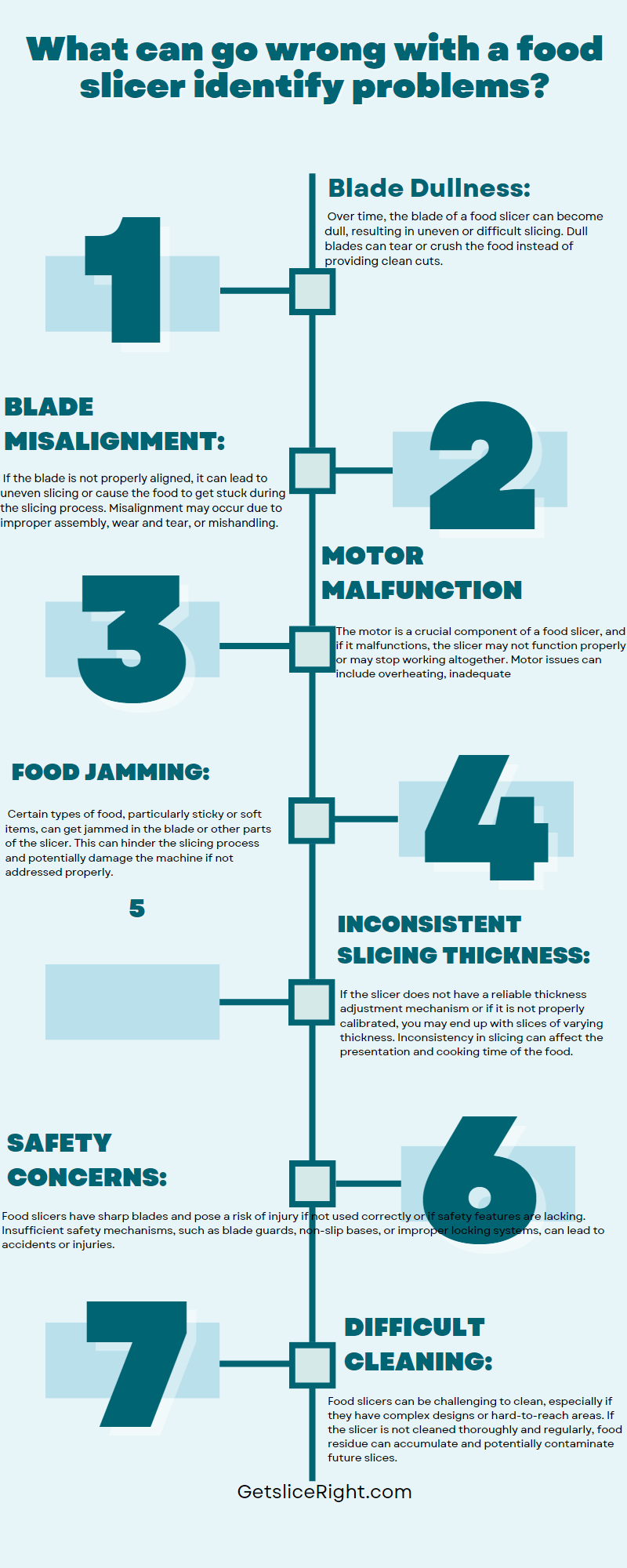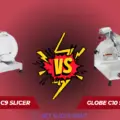Food slicers have become a compulsory kitchen tool. Food slicers have different types, can perform additional work, and have their operating system. A Food slicer can slice through fresh vegetables and fruits with ease without the need to spend a lot of time preparing them beforehand. When the slicer stops working, you must know what goes wrong with a food slicer, which parts have become dull and how to identify its problem. So you can be able to solve the problem yourself and keep slicing on it.
Working of Food Slicer

Food slicers are used for slicing meat, vegetables, and cheese. Slicers are of two types manual and electric. Manual slicers work manually, while electric slicers consist of a motor, blade, and blade guards. The stainless steel blades can be removed easily.
You just have to push the sliding tray forward for a work electric slicer. The blades will cut through the food and drop slices on the machine’s left. While in manual slicers, you have to adjust the thickness and push the food in a back and forth motion food will be sliced.
What can go Wrong with a Food Slicer?
Just like other machines, food slicers may stop working. As it consists of a motor and blades, the dullness of the blades or any fault in the motor can be the root cause. The switch, gear, or power cord may need maintenance. The blades can be clogged with some food, and the slicer can be jammed. May the parts of the slicer need lubrication. Sometimes the food does not go slightly smoothly on the surface. Another problem is that the food can be unevenly sliced, which can lead to inconsistent results. There can be several possible reasons that have stopped food slicers from slicing.
How to Identify Food Slicer Problems?
If you are having trouble with your food slicer, there are a few things that you can do in order to identify the problem.
- Firstly, check that slicer is connected to power, and you have switched it on. Check the electrical cord. If the cord is frayed or damaged, it will need to be replaced. Check that you have plugged the cord properly.
- When you make sure that power is connected, check the motor. If the motor is not running properly, it will need to be repaired or replaced
- Check to make sure that the slicer is properly assembled and that all of the parts are securely in place
- Check the blades to see if it is dull or damaged in any way. If so, you’ll need to replace the blade
- Make sure that the food slicer is properly lubricated and that the moving parts are not sticking. If food does not slightly smoothly, lubricate with oil.
- If the slicer makes noise examine the gears. Misaligned blades, which can be adjusted, and damaged gears, which will need to be replaced
How to avoid Problems in Food Slicers?
If you own or operate a food slicer, then you know that there are a lot of things that can go wrong with this type of equipment. In order to avoid any problems, it is important to identify the potential issues that can occur and more important to take steps to prevent them. Here are some tips on how to avoid problems in food slicers:
- Keep the slicer clean. It is important to clean the slicer after each use. This will help to prevent build-up of food particles and bacteria, which can lead to contamination and cross-contamination.
- Inspect the blades regularly. The blades on a food slicer can become dull or damaged over time. Inspect the blades regularly and replace them as needed. This will help to ensure that the slicer is cutting through food properly and not causing any damage.
- Be careful with raw meat. If you are slicing raw meat, be sure to use extra caution. Raw meat can contain bacteria that can cause food poisoning if not handled properly. Be sure to wash your hands thoroughly after handling raw meat or frozen meat and keep it away from other foods that will not be cooked before eating.
- Don’t apply steel wool to the slicer.
- Always follow the manufactures guide thoroughly.
- Always wear cut resistance gloves while using Food Slicer.
- Never submerge the slicer completely.
- Keep the surface area free of clutter.
- Never push meat with bare hands.
- Lock the blades when not in use.
FAQ’s
What should I look for in a food slicer?
You should make sure that the blades are stainless steel.
What safety should you remember for food slicers?
Wear resistance gloves before operating.
What is the most common problem with slicers?
Dullness of blades is the most common problem.
I bought a slicer and sliced cheese using it; it’s coming out black dirty. What’s going wrong?
The blade might have oil on it. The blade can come off using a star screwdriver and can be cleaned better.
I was cutting beef for 5 minutes, and then it shut off and would not turn back on. What’s wrong?
Alternatively, the motor may have overheated.
Belt Replacement Meat Slicer
Conclusion

To identify the problems of food slicers, you should know about all parts of the slicer, their functions, maintenance, and repair. So you can get the most out of your slicer.

Mario Batali is a renowned author, food enthusiast, and passionate chef who has dedicated his life to exploring the world of culinary arts. With a love for sharing his knowledge and experiences, Mario has become a prominent figure in the food blogging community, inspiring countless readers with his creativity and expertise.
In addition to his culinary prowess, Mario Batali is also a talented writer with a flair for engaging storytelling. He launched his own food blog to share his recipes, cooking tips, and personal experiences in the kitchen. Over time, Mario’s blog gained a loyal following of food enthusiasts who appreciate his unique approach to cooking and his dedication to using only the finest ingredients.
Mario Batali’s passion for food and his commitment to sharing his knowledge with others have made him a true inspiration in the world of culinary arts. Through his blog, cookbooks, and public appearances, Mario continues to spread his love of food and the joy of cooking with his ever-growing fanbase.







